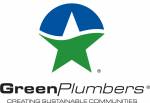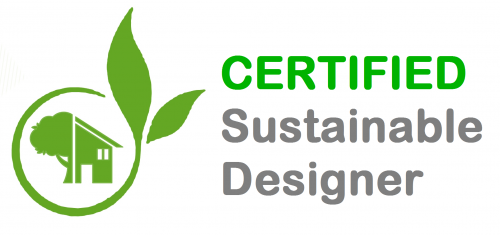Green Renovations
Renovating a house presents a unique opportunity to not only enhance its aesthetic appeal and functionality but also to embrace sustainable practices that contribute to a healthier environment. Sustainable house renovations involve mindful choices in materials, energy usage, and design to reduce the environmental impact.
Above: What constructions methods, designs and materials can be used when renovating to create a more sustainable home? Nick Sowden from Sowden Building Solutions is an accredited Master Builders Green Living builder in Sydney, and in this video he explains how easy it is to go green.
-
Assessment and Planning:
Principle: Conduct a Comprehensive Assessment
- Before diving into any renovation project, conduct a thorough assessment of the existing structure to identify areas that need attention. This assessment includes evaluating energy efficiency, water usage, and the overall environmental impact of the house.
Methods:
- Energy Audit: Identify opportunities to improve energy efficiency, such as upgrading insulation, windows, and HVAC systems.
- Water Efficiency Assessment: Look for ways to reduce water consumption, such as installing low-flow fixtures or greywater systems.
- Environmental Impact Analysis: Consider the embodied energy of existing materials and assess their sustainability. Identify materials that can be reused or repurposed.
Benefits:
- Informed decision-making for sustainable improvements.
- Efficient use of resources by targeting specific areas that require attention.
-
Energy Efficiency Upgrades:
Principle: Prioritize Energy Conservation Measures
- Enhancing energy efficiency is a key principle in sustainable house renovations. Upgrading systems and features that contribute to energy consumption can significantly reduce the environmental impact of the house.
Methods:
- Insulation: Improve insulation in walls, floors, and roofs to reduce heating and cooling energy requirements.
- Energy-Efficient Windows: Install windows with low-emissivity coatings and double glazing to minimize heat transfer.
- LED Lighting: Replace traditional lighting with energy-efficient LED fixtures to reduce electricity consumption.
- Smart Thermostats: Integrate smart thermostats for precise control over heating and cooling systems.
Benefits:
- Lower energy bills for homeowners.
- Reduced reliance on non-renewable energy sources.
-
Sustainable Materials Selection:
Principle: Choose Environmentally Friendly Materials
- Selecting sustainable materials is a crucial aspect of eco-friendly renovations. Opt for materials with low embodied energy, recyclable content, and minimal environmental impact.
Methods:
- Reclaimed Wood: Use reclaimed or salvaged wood for flooring, furniture, and decorative elements.
- Recycled Metal: Incorporate recycled metal in roofing, fixtures, or structural elements.
- Bamboo Flooring: Choose bamboo, a rapidly renewable resource, for flooring options.
- Low-VOC Paints and Finishes: Use paints and finishes with low volatile organic compound (VOC) content to improve indoor air quality.
Benefits:
- Reduced demand for new resources and minimized environmental impact.
- Promotion of a circular economy by supporting materials with recycling potential.
-
Water Conservation Strategies:
Principle: Conserve Water Resources
- Sustainable house renovations should address water usage to minimize waste and contribute to water conservation.
Methods:
- Low-Flow Fixtures: Install low-flow faucets, showerheads, and toilets to reduce water consumption.
- Rainwater Harvesting: Collect and store rainwater for non-potable uses such as irrigation.
- Greywater Systems: Implement systems to treat and reuse greywater from sinks, showers, and laundry for landscape irrigation.
Benefits:
- Lower water bills for homeowners.
- Minimized strain on local water supplies.
-
Waste Reduction and Recycling:
Principle: Minimize Construction and Operational Waste
- Sustainable house renovations prioritize waste reduction and recycling to divert materials from landfills.
Methods:
- Deconstruction: Instead of demolition, consider deconstruction to salvage reusable materials.
- Recycling Centers: Partner with local recycling centers to responsibly dispose of construction waste.
- Upcycling: Incorporate reclaimed materials creatively into the renovated design.
Benefits:
- Reduced environmental impact through lower landfill waste.
- Contribution to a circular economy by promoting the reuse and recycling of materials.
-
Renewable Energy Integration:
Principle: Harness Clean, Renewable Energy Sources
- Consider incorporating renewable energy systems to power the renovated house with clean and sustainable sources.
Methods:
- Solar Panels: Install solar panels on the roof to generate electricity.
- Wind Turbines: In suitable locations, explore small-scale wind turbines for on-site power generation.
- Solar Water Heaters: Utilize solar water heaters to reduce reliance on traditional water heating methods.
Benefits:
- Lower carbon footprint and reduced reliance on non-renewable energy sources.
- Long-term energy cost savings for homeowners.
-
Healthy Indoor Environment:
Principle: Prioritize Indoor Air Quality
- Sustainable house renovations focus on creating a healthy indoor environment by minimizing the use of harmful chemicals and promoting good air quality.
Methods:
- Low-VOC Paints and Finishes: Opt for paints and finishes with low VOC content to reduce indoor air pollution.
- Natural Ventilation: Design spaces to maximize natural ventilation, improving air circulation.
- Air Purification Systems: Integrate air purification systems to enhance indoor air quality.
Benefits:
- Improved health and well-being of occupants.
- Reduced exposure to harmful indoor pollutants.
-
Adaptive Reuse and Flexibility:
Principle: Design for Longevity and Adaptability
- Sustainable renovations prioritize designs that allow for adaptability over time, reducing the need for frequent renovations.
Methods:
- Flexible Floor Plans: Design spaces that can easily adapt to changing needs or technologies.
- Adaptive Reuse: Repurpose existing structures for new functions, reducing the demand for new construction.
- Modular Construction: Utilize modular construction methods to allow for future modifications.
Benefits:
- Preservation of cultural and historic value in existing structures.
- Reduced embodied energy associated with new construction.









